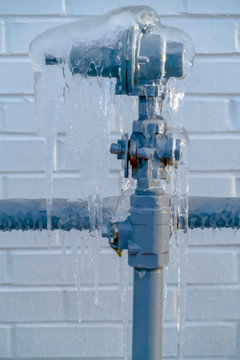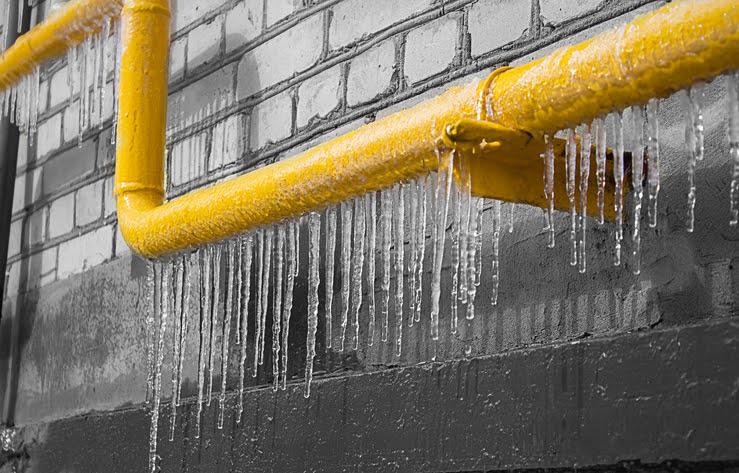Prevent Frozen Plumbing in Winter: Professional Advice
Prevent Frozen Plumbing in Winter: Professional Advice
Blog Article
Right here further down you can get a bunch of really good ideas in relation to How to prepare your home plumbing for winter weather.

Winter can ruin your plumbing, specifically by freezing pipes. Below's exactly how to prevent it from occurring and what to do if it does.
Intro
As temperature levels decrease, the threat of icy pipelines increases, potentially resulting in expensive fixings and water damage. Comprehending how to avoid frozen pipelines is essential for homeowners in chilly environments.
Avoidance Tips
Insulating at risk pipelines
Cover pipelines in insulation sleeves or make use of warm tape to safeguard them from freezing temperature levels. Focus on pipes in unheated or exterior locations of the home.
Heating techniques
Maintain interior areas appropriately heated, particularly areas with pipes. Open cabinet doors to permit cozy air to circulate around pipes under sinks.
How to determine icy pipes
Seek lowered water flow from faucets, uncommon odors or sounds from pipes, and noticeable frost on exposed pipes.
Long-Term Solutions
Architectural modifications
Consider rerouting pipes away from exterior walls or unheated locations. Include additional insulation to attic rooms, basements, and crawl spaces.
Upgrading insulation
Invest in top notch insulation for pipelines, attic rooms, and walls. Correct insulation assists keep regular temperatures and reduces the threat of icy pipelines.
Protecting Outside Plumbing
Yard pipes and outdoor taps
Separate and drain yard tubes prior to winter. Set up frost-proof faucets or cover outdoor faucets with insulated caps.
Comprehending Icy Pipelines
What causes pipes to freeze?
Pipelines freeze when exposed to temperature levels below 32 ° F (0 ° C) for expanded periods. As water inside the pipes freezes, it increases, taxing the pipeline wall surfaces and potentially creating them to break.
Risks and damages
Frozen pipelines can lead to water system disturbances, building damage, and costly repair work. Burst pipelines can flooding homes and cause considerable architectural damage.
Signs of Frozen Pipeline
Recognizing frozen pipelines early can prevent them from bursting.
What to Do If Your Pipelines Freeze
Immediate activities to take
If you presume frozen pipelines, maintain taps available to relieve pressure as the ice thaws. Utilize a hairdryer or towels taken in warm water to thaw pipelines gradually.
Conclusion
Avoiding icy pipes needs positive steps and quick feedbacks. By recognizing the causes, signs, and preventive measures, house owners can protect their pipes throughout winter.
5 Ways to Prevent Frozen Pipes
Drain Outdoor Faucets and Disconnect Hoses
First, close the shut-off valve that controls the flow of water in the pipe to your outdoor faucet. Then, head outside to disconnect and drain your hose and open the outdoor faucet to allow the water to completely drain out of the line. Turn off the faucet when done. Finally, head back to the shut-off valve and drain the remaining water inside the pipe into a bucket or container. Additionally, if you have a home irrigation system, you should consider hiring an expert to clear the system of water each year.
Insulate Pipes
One of the best and most cost-effective methods for preventing frozen water pipes is to wrap your pipes with insulation. This is especially important for areas in your home that aren’t exposed to heat, such as an attic. We suggest using foam sleeves, which can typically be found at your local hardware store.
Keep Heat Running at 65
Your pipes are located inside your walls, and the temperature there is much colder than the rest of the house. To prevent your pipes from freezing, The Insurance Information Institute suggests that you keep your home heated to at least 65 degrees, even when traveling. You may want to invest in smart devices that can keep an eye on the temperature in your home while you’re away.
Leave Water Dripping
Moving water — even a small trickle — can prevent ice from forming inside your pipes. When freezing temps are imminent, start a drip of water from all faucets that serve exposed pipes. Leaving a few faucets running will also help relieve pressure inside the pipes and help prevent a rupture if the water inside freezes.
Open Cupboard Doors
Warm your kitchen and bathroom pipes by opening cupboards and vanities. You should also leave your interior doors ajar to help warm air circulate evenly throughout your home.

As a serious person who reads on Helpful Tips to Prevent Frozen Pipes this Winter, I thought sharing that segment was sensible. Liked our article? Please share it. Let another person locate it. We treasure reading our article about Prevent Frozen Pipes .
Book Service Now Report this page